The United States of Film: Vermont
You might assume the Green Mountain State has little to offer cinematically. You'd be correct.
Movies Lists“What happens in Vermont, stays in Vermont. But nothing really happens.”
If you’ve ever been to the Green Mountain State, or even if you haven’t, chances are you’ve seen this wisecrack printed on a bumper sticker or perhaps a T-shirt. To a generous degree, it’s true; Vermont is a peaceful place where life ambles along and nobody, and nothing, is in a hurry to get anywhere. Unless you make the trek north toward the Canadian border, you won’t come across metropolitan living, and even then, “metropolitan” might be pushing it a bit. The Burlington-South Burlington New England City and Town Area boasts a total population of roughly one hundred-and-ninety eight thousand people. That’s just a fraction of the total population in, say, Boston, which itself has only a fraction of the inhabitants living in New York City. Vermont is a small, spread-out state. No hustle and bustle here.
That’s not a knock, of course, because size isn’t at all an indicator of excellence. Vermont might not have the scale of other parts of the Northeast, but it’s chock full of great people, top-notch ice cream, farm-to-table living, beautiful mountains, more nanobreweries than you can shake a growler at, and, if you’re a winter sports fan, arguably the best skiing and snowboarding in New England. (Them’s fightin’ words to Mainers and especially to New Hampshirites, for whom Cannon Mountain is as hallowed as any man made place of worship.)
What Vermont lacks is much by way of a lively movie culture, much less actual representation in the movies. (How rarely does Vermont show up in the movies? So rarely that The Simpsons Movie, which only happens to share a toponym with Vermont and enjoyed its premiere there, almost made the cut.) So when we composed this list of movies about Vermont—whether directly or indirectly, and whether they’re “based” in it or actually, physically filmed in it—we really had to crack down and do our homework, because let’s face it, pictures like What Lies Beneath don’t really belong on a “best of” joint of any sort. So we dug. And we dug. And we dug, and we dug, and we came up with a fistful of joints that range from “pretty good” to “absolutely stellar.” but which all capture the soul of Vermont in their own ways, big and small.
10. Shop Girl
Year: 2005
Director: Anand Tucker
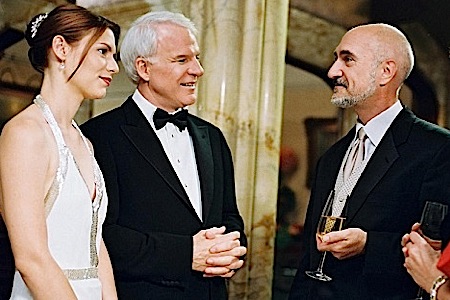
This isn’t a film about Vermont as much as it’s a film about the Vermonter, divorced from the familiarity of her home and thrust into a foreign land. In this case, “foreign” is a generous term—we’re talking Beverly Hills here—you can imagine that the switch from an unnamed sleepy town in Vermont to one of California’s more exclusive cities is probably pretty jarring. Hence, Shopgirl, an ostensible Steve Martin vehicle based on his novella of the same name. Martin is the architect of the film as well as its leading man, but the film’s real star is Claire Danes, portraying a young woman self-removed from the place of her birth and led utterly astray by the two-faced world Ray, Martin’s wealthy logician, inhabits.
Shopgirl is a wonderful movie for a variety of reasons, but for the purposes of this list the most important is what Vermont means to Mirabelle, Danes’ struggling transplant and an aspiring artist striking out on her own in 90210. In the rushed, glitzy, plastic Beverly Hills ecosystem, Mirabelle finds herself spun about and taken advantage of by the emotionally distant Ray (not to mention her jealous, scheming co-worker, Lisa). The film makes an obvious moral judgment by comparing its two locales: if the Hills is a source of stress for Mirabelle, who we know is on antidepressants from the very beginning, then Vermont is a place of succor where all the ills of a life lived in the fast lane can be washed away by the comfort of hearth, family, and a blanket of fresh snowfall.
9. Baby Boom
Year: 1987
Director: Charles Shyer

Need to get away from the never-ending buzz of city life? Are you looking for an opportunity to start things afresh? Do you want to get away from the chauvinism of your day job and give your family a better life? In a nutshell, that’s the arc of Baby Boom, which is sort of an inverse Shop Girl that’s all about the out-of-towner starting a new chapter by leaving her noisome cosmopolitan existence and setting roots in Vermont. Frankly, it’s more of a Frank Capra movie than the actual Frank Capra movie that appears toward the end of this list, which is to say that it’s the film equivalent of eating a pair of cake pops. It’s sweet as hell and it’s probably not great for you, but it’s slight enough that you can justify the calories.
Why watch Baby Boom? Diane Keaton, of course, who here is such a tonic that she gives the movie substance just by being on the set. Keaton plays J.C. Wiatt, a high-powered business executive stationed in Manhattan who winds up burdened with raising her deceased cousin’s baby. Keaton and Nancy Meyer’s script give the material just enough edge to keep the film from feeling like a Lifetime movie; they skewer J.C.’s yuppie lifestyle with glee, ultimately advocating (as a couple other movies on this list also do) the benefits of the down-to-earth living of Vermont. Making the move is a pretty sweet deal for J.C.—she trades her Harold Ramis for a Sam Shepard, and she finds a way to make millions off of designer baby food. (Hey, you can take the Manhattanite out of Manhattan, but you can’t take the Manhattan out of the Manhattanite.) Baby Boom is a trifle and a fantasy, but as trifling fantasies go, this one’s pretty compelling.
8. Wolf
Year: 1994
Director: Mike Nichols
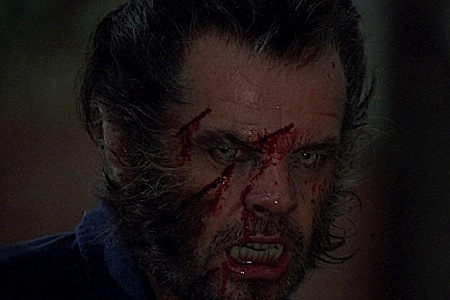
Most of the filming on the late Mike Nichols’ uneven but no less engaging attempt at making a werewolf film took place in California—surprise, surprise—but exterior shots from the opening credits were taken in Roxbury, but let’s not be sticklers about location. The idea of a literate genius like Nichols suffusing a monster movie with the sort of loaded, conversational sparring seen in films like Carnal Knowledge, The Graduate, and Who’s Afraid of Virginia Woolf? (ha! Woolf!) sounds terrific on paper, and in practice it works … until it doesn’t. This is a movie that’s all about metaphor. Once the story sheds that skin, so to speak, it wanders off the tracks a bit.
But a Mike Nichols werewolf flick is still a flick worth watching, if only because in his hands the beast is placed within altogether unfamiliar confines. Sure, wilderness abounds here, but how many movies about lycanthropy couch their supernatural elements in the publishing world? James Spader and Jack Nicholson circle each other like snarling dogs even when Rick Baker isn’t busy styling them in the manner of Lon Chaney (though with far more restraint). Nicholson is the anchor the film needs while Spader fills the screen with his loathsome, smarmy charms, having nearly achieved full control over his abilities as a ne’er-do-well by this point in his career. (It’s a shame Michelle Pfeiffer doesn’t have more to do, but the fact that she vibes so well with Jack despite working with a thinly sketched character speaks to her talent level.)
The common lament about Wolf—that it works better when it isn’t pretending to be a straightforward werewolf movie—still rings true today, but when Nichols leans on allusion, the film is a keenly crafted observation of restrained masculinity pushing against the restrictive grip of office politics.
7. Spellbound
Year: 1945
Director: Alfred Hitchcock
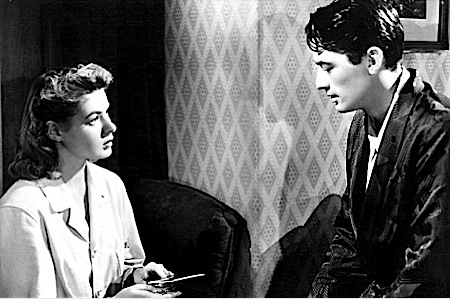
The first of two entries on this list by the master of suspense, and arguably one of his lesser works (depending on who you ask). Spellbound never received quite the same level of adulation as Hitch’s best films—the Psychos, the North by Northwests, the Rear Windows, the Vertigos—but even minor Hitch is superior to any number of movies that were getting made by his contemporaries. Indeed, Spellbound is a surprisingly prescient summation of many of Hitchcock’s proclivities as a filmmaker, and while its melodramatic elements heavily date it in 2015 (in particular Ingrid Bergman’s over-stereotyped and over-exaggerated protagonist), it’s still a mesmerizing stunner.
If you know anything about Spellbound, you’re probably aware of its signature moment, a dream sequence concocted by none other than surrealist extraordinaire Salvador Dali. More than just unsettling, though, the scene is integral to unraveling the movie’s central mystery. A faceless man stalks around a brick chimney, unblinking human eyes stare in judgment from the tapestry of the cosmos, a man runs in terror from the shadow of a great bird of prey. Hitchcock, ever the innovator, even throws in a nifty shot filmed from a first-person perspective. Maybe praising a Hitchcock production for looking terrific is sort of easy, because the guy just didn’t know how to make movies look bad, but he dazzles so much with Spellbound’s technical flourishes that the film’s failures are made pleasing by consequence.
What does it all have to do with Vermont? Very little, but there’s something delightfully chilling about the thought that a dreamlike psychotherapeutic whodunit like this could transpire in such an unassuming state.
6. Dark Victory
Year: 1939
Director: Edmund Goulding
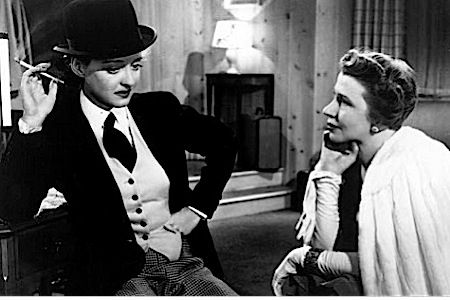
Edmund Goulding’s tale of a Long Island socialite who resettles in Brattleboro is high soap opera; the film preys upon viewers of gentler sensibilities, which is a nice way of saying that it’s for softies. Funny thing, though—even for steelier cinephiles, Goulding shows a deft hand at tugging heartstrings. Dark Victory doesn’t flirt with melodrama as much as brazenly proposition it. The film is capable of catching just about anybody on its piercing, emotional hooks before they know they’ve been snagged. (For our purposes it also establishes a common running theme among this list’s entries: the idea of the newcomer migrating to Vermont’s rustic embrace.)
But let’s not give Goulding all the credit, because the guy has a hell of an ace up his sleeve, and that ace is the legendary Bette Davis. We remember Davis for her work in films like All About Eve, Jezebel and What Ever Happened to Baby Jane?; Dark Victory isn’t nearly as good as any of these, but Davis is pretty damn great in it, wielding her one-liners, gibes and quips as fluidly as a veteran fencer handles a foil. Tracking her arc is a rush. She plays Judith, a spoiled heiress doomed to die from a malignant brain tumor. We’re told that the disease will slowly rob her sight, and once it does it’ll take her life. Unsurprisingly Judith doesn’t handle this revelation well—the fact that her friends and loved ones lie to her about her diagnosis doesn’t help, either—until the very end, when she becomes determined to meet her fate with grace. For all the film’s substantive cheapness, its climax is immeasurably devastating.
5. Funny Farm
Year: 1988
Director: George Roy Hill
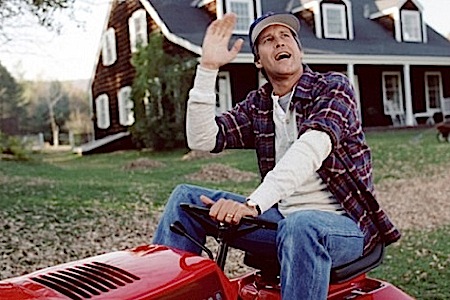
Setting foot in Vermont for the first time feels an awful lot like setting foot in another world, similar to your own but different where it counts. In George Roy Hill’s Funny Farm, that difference lies in temperament: Chevy Chase and Madolyn Smith play Andy and Elizabeth Farmer, a painfully New York married couple who move to a quaint Vermont town called Redbud (in actuality a quaint Vermont town called Townshend, where Hill shot most of the film) so that Andy, a sports writer by trade, can bang out the next Great American Novel. The hilariously misnamed Farmers expect Redbud and its residents—Redbuddians? Redbudders?—to fit their expectations of charming, small-town New England as a welcoming haven where everyone knows everyone and strangers are treated like family.
But of course that’s not what they get. Redbud’s residents are untrusting, rapacious and devious. The sheriff doesn’t have a driver’s license, so he motors about town in a cab. The postman is more interested in running you down than delivering your mail. Sheep’s testicles are considered a delicacy. When the Farmers think about selling their house and splitting up, Andy bribes the locals to play act, presenting Redbud as the Rockwellesque village they thought it would be so as to fool potential buyers. It’s standard fish out of water stuff that rises above the convention thanks to its leads (especially Chase) and Hill’s direction. His organic approach to comedy is appropriate in light of Vermont’s emphasis on doing things naturally.
4. Mr. Deeds Goes to Town
Year: 1936
Director: Frank Capra
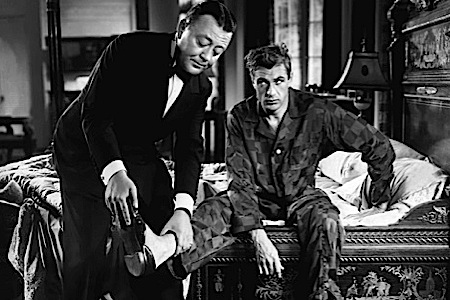
If Funny Farm subverts the image of picturesque New England, then Mr. Deeds Goes to Town pretty much revels in it. You could argue that Frank Capra’s 1930s screwball rom-com invented that image, at least in cinematic terms. If nothing else, the film helped solidify the standard. It’s Mandrake Falls, man! The scenery enthralls, and on top of that, it’s a town where no hardship e’er befalls! If that isn’t the definition of pastoral whimsy, then what is? For a modern audience, Mr. Deeds Goes to Town announces its intentions and its lighthearted tone the moment Lionel Stander’s jaded, erstwhile newspaperman Cornelius Cobb reads that lyrical maxim aloud upon first arriving in Longfellow Deeds’ hometown.
The film weighs about as much as a feather, but buoyancy isn’t the necessarily same thing as triviality. Capra spent huge swaths of his career making warm, likable, frequently airy flicks that have to this day stood the test of time and remain classics in filmic canon. Mr. Deeds Goes to Town lacks the distinctly iconic posture of It’s a Wonderful Life and Mr. Smith Goes to Washington, but it is no less a champion of the common man in the battle against “the forces of entrenched greed,” as Capra himself once put it. The cooperative, egalitarian spirit at the picture’s heart is fitting for a yarn that takes place in Vermont. Junior senator Bernie Sanders is a self-described democratic socialist, after all, and any story that ends with a victory for the little guy (farmers, no less) is probably just his speed.
3. State and Main
Year: 2000
Director: David Mamet

David Mamet is as David Mamet does, which is to say that no matter the story and no matter the cast, he always sets his prickly, cutting work afloat on toxic currents. In State and Main, he plots a course through the treacherous, straining world of movie production. Mamet’s subject is a flailing film shoot that’s initially set in New Hampshire but has to swap locations thanks to the dalliances of its leading man, Alec Baldwin’s unrepentant playboy movie star. Banished from the Granite State, the cast and crew travel west to Waterford, Vermont, to complete the picture. (Given the relationship Vermont has with New Hampshire, the very specific change in scenery almost feels like an intentional nose-thumbing gesture.)
Of course, State and Main was really shot across Massachusetts, from Dedham to Waltham to Manchester-by-the-Sea, but Mamet and company successfully fool viewers into thinking they’re looking at the real Waterford. Maybe that’s the joke, though; just as the characters try to finish the movie-within-a-movie in a different setting than purported, Mamet’s film unfolds within a separate area than we’re meant to believe. But that’s the movie business for you—flimflam and artifice abound. William H. Macy’s selfishly dauntless director and David Paymer’s rabid producer sweet-talk and cheat the Waterford populace to get what they want. Clark Gregg’s ethically compromised city planner reminds us that town government can be just as unsavory as Hollywood. Baldwin, for his part, does magnificent work at feigning candor as the ephebophile. Only Philip Seymour Hoffman’s anxiety-stricken screenwriter struggles over matters of integrity. He’s the sincere heart of a movie that runs on insincerity.
2. Super Troopers
Year: 2001
Director: Jay Chandrasekhar
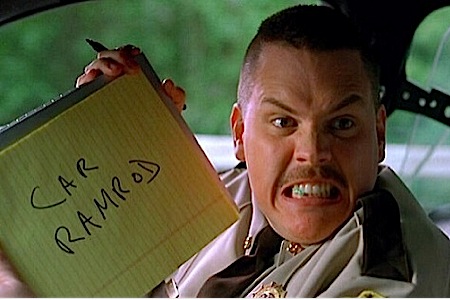
The king bummer with Super Troopers is that Jay Chandrasekhar shot the whole damn thing in New York rather than Vermont itself. Beacon, Ossining, and Briarcliff Manor don’t even border Vermont, for crying out loud. Even upstate the film might have felt slightly more Vermonty just by virtue of proximity. But if Super Troopers proves anything, it’s that you can create the illusion of location if you try hard enough, and through both its characters and its landscapes the movie manages to compose a convincing facsimile of Vermont’s bucolic glory. This is how you expect Vermont to look. More than that, this is how you expect Vermont state troopers to behave. What else are highway patrol officers supposed to do to pass the time in a place where nothing happens?
Super Troopers’ best asset is its charm. This movie wants you to like it, much as its cast of miscreant policemen want to be liked by, well, pretty much everybody, even (perhaps especially) the people that they bust. As much as they delight in tormenting teens on a drug-fueled car ride in the film’s opening moment, there’s a strong sense that Thorny, Foster, Mac and Rabbit would prefer to get wasted with them instead of putting them behind bars. (Hell, they share a joint with Philippe Brenninkmeyer after nailing him for bad driving.) They’re a fun bunch, in other words, well worth taking a ride with once, twice, or however many other countless times you’re compelled to jam this cult hit in your DVD player just to hear its best one-liners for the umpteenth time. There’s a reason Super Troopers has so much longevity—it might not be much of a film (even its most ardent defenders might admit that it’s slapdash), but it’s a hell of a comedy.
1. The Trouble With Harry
Year: 1955
Director: Alfred Hitchcock
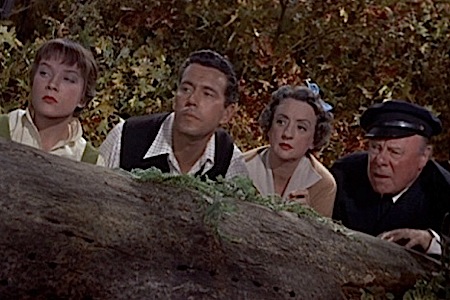
Hitchcock’s second appearance on this list is the polar opposite to Spellbound, whose plot feels like it could happen anywhere but Vermont. Conversely, the trick to The Trouble with Harry is that it could only happen in Vermont. How do you hide a corpse in sprawling urbanity without drawing attention to yourself? You don’t. You get caught and you go straight to the clink. But the rural culture of the fictional Highwater, Vermont, provides ample space and opportunity for concealing a cadaver without attracting the scrutiny of the law. (Craftsbury supplies the movie with its surroundings, though Hitch’s team showed up to film just after the area’s foliage had fallen in September, forcing them to glue leaves to trees for proper autumnal effect.) There’s plenty of space to discretely bury a dead body in farm country, and then dig it up, and bury it again, and lather, rinse, repeat.
Such is Hitch’s morbid sense of humor. The Trouble with Harry is one of his only attempts at making a bona fide comedy. He’s a great hand at comic relief, certainly, but it goes without saying that he spent most of his career making thrillers. This film combines both but puts a higher premium on the former than the latter. Who killed Harry Thorp? Nobody knows, but he’s totally dead and that’s the “trouble.” For just over an hour and a half, Edmund Gwenn, John Forsythe, Mildred Natwick, and most of all Shirley Maclaine (in her film debut!) each bumble about trying to figure out who among them accidentally knocked off poor Harry while staying a step ahead of Royal Dano’s stuffy deputy sheriff. No one really cares that Harry has ceased to be, mind. They’re just concerned about their culpability, which might be the film’s most tongue-in-cheek punchline.
Boston-based critic Andy Crump has been writing about film for the web since 2009, and has been scribbling for Paste Magazine since 2013. He also contributes to Screen Rant, Movie Mezzanine, and Badass Digest. You can follow him on Twitter. Currently he has given up on shaving.